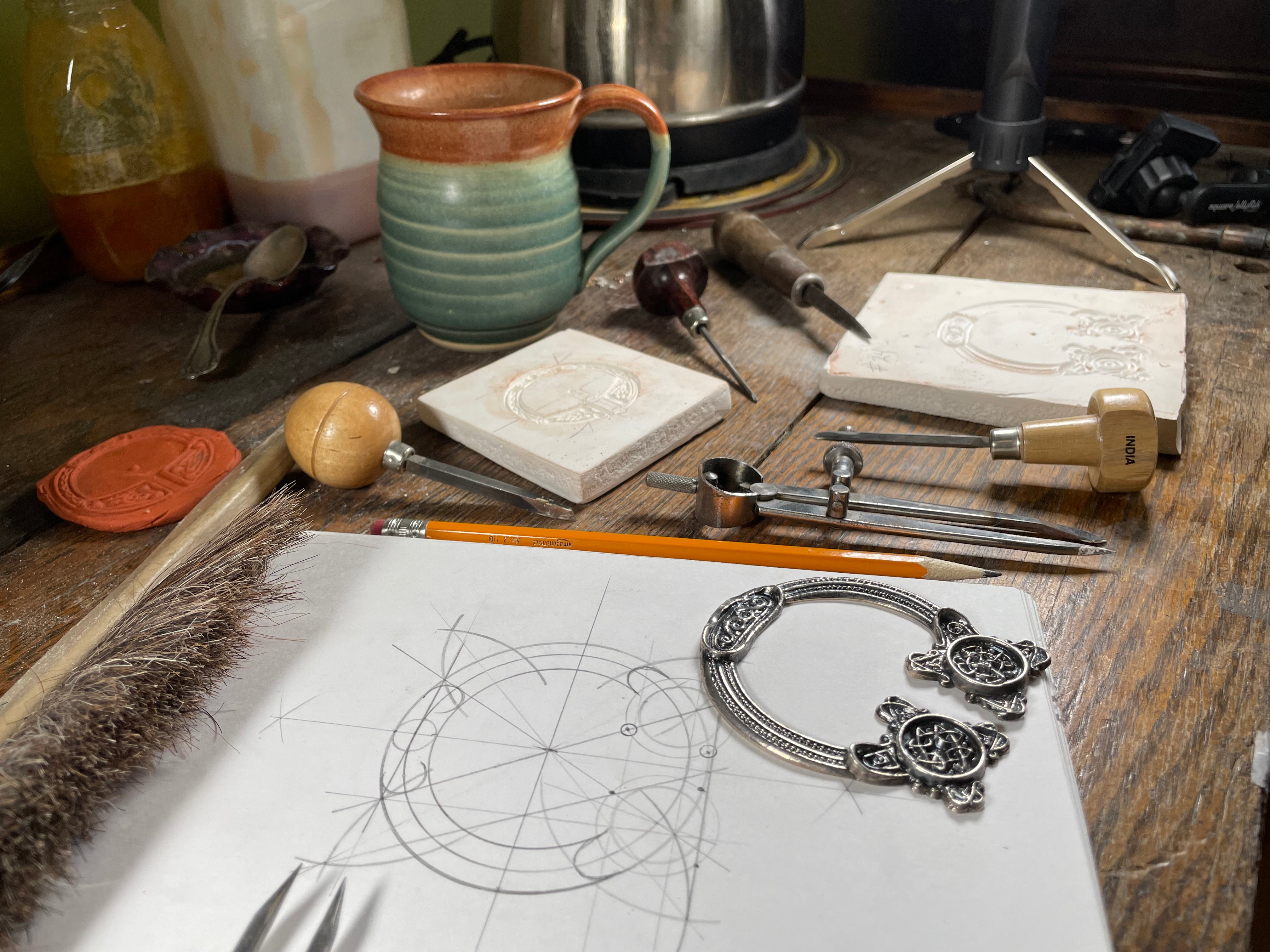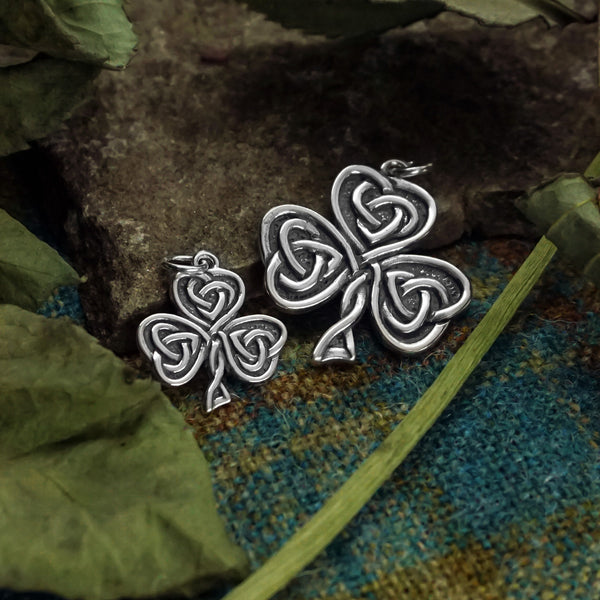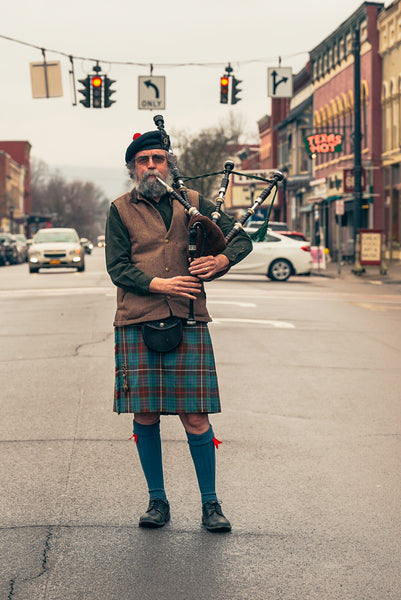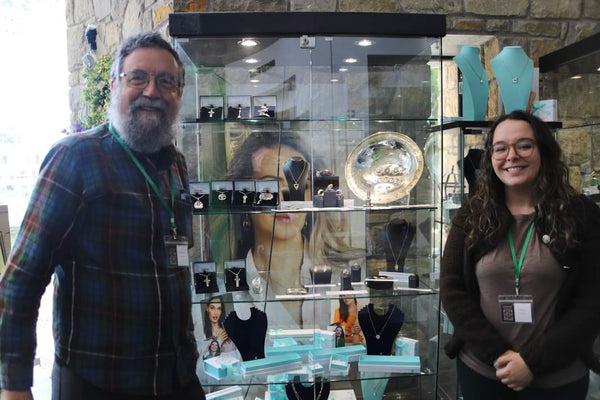- Jewelry
- Crosses
- Rings
- Mens
- Claddagh
- Wedding
- Personalized Jewelry
- John Urban Jewelry
- Sale
- Gift Certificates
- About Us
March 30, 2022 1 Comment

Since I began working in jewelry nearly fifty years ago, there have been amazing additions to the craftsman's tool chest. Now we have laser welders, 3D printers and induction casting machines. Yet, the mind boggling complexity and mastery of materials of the great masterpieces of Celtic metalwork that inspired me were created with even less than the basic tools I had in the 1970s.
The Celtic metalworking of the early medieval period were crafted when goldsmiths had to make their own wire. Casting was done with charcoal fired foundries. Molds were fashioned without the benefit of commercially engineered materials. Sometime after such masterpieces as the Tara Brooch were made circa 750 A. D., some of the skills used to produce these marvels were lost. What especially fascinated me was the kerbschnitt, or chip-carved designs cast into high status metalwork.
Since 2006 I have been experimenting with methods of mold making as I believe they were practiced in early medieval times. It has been a thrilling sideline to my business as a jeweler. Every three to five years there is a gathering of people interested in medieval Celtic art. The International Insular Art Conference will be held in Durham, England in April 2022. I am very pleased to making a presentation to this esteemed group of art historians, museum professionals, archaeologists and scholars.
My paper is titled Carving Brooch Moulds with Coherent Geometry
The abstract states:
“Designs and layouts constructed using compass and straight edge can be found underlying Insular art in stone, metal and on vellum. These methods are well documented by the late Robert Stevick. When moulds are created for the casting of metal objects, the compass can also be adapted as a carving tool. This paper will demonstrate the common system used to construct the frames of penannular brooches of the late 7th to 9th centuries and show the method of carving as it relates to the layout geometry.”
My presentation will be more of the "fat crayons" version of Stevick's much more mathematically accurate explanation of the methods of composition of Celtic art design. What is unique to my work is that I will be showing how a compass can be modified into a cutting tool and how these were very essential to how kerbschnitt style cast metalwork was created.
For more information on coherent geometry, the following links are to Robert Stevick's publications:
The Form of the Tara Brooch, Published By: Royal Society of Antiquaries of Ireland https://www.jstor.org/stable/25549839
The Ancestry of Coherent Geometry Published By: Royal Society of Antiquaries of Ireland https://www.jstor.org/stable/25549914
A link to a presentation I gave at the International Day of Celtic Art Conference in 2019 can be seen at https://www.youtube.com/watch?v=-rHwMb1om6o
My previous papers on mold making in Insular metalwork have been published in the three previous IIAC Proceedings:
A Craftsman's Perspective on the St. Ninian's Isle Treasure, MAKING HISTORIES; Proceeding of the Sixth International Conference on Insular Art, York 2006. Edited by Jane Hawkes, ISBN 978-1-907730-31-3
The kerbschnitt technique on the Ardagh Chalice ISLANDS IN A GLOBAL CONTEXT Proceedings of the Seventh International Conference on Insular Art, Galway 2014, edited by Newman, Manion & Gavin, ISBN 978-1-84682-568-2
Manufacturing the thin, openwork panels on the Cross of Cong, PEOPLING INSULAR ART; Practice, Performance, Perception, Proceedings of the Eighth International Conference on Insular Art, Glasgow 2017, Edited by Thickpenny, Forsyth, Geddes & Mathis ISBN 978-1-78925-454-9




Comments will be approved before showing up.

March 12, 2024

February 23, 2024
Thousands of photographs were taken. Help find at least one.
Were you a tourist in London, Dublin or Paris in 1975 – 1978? Did you see a street performer playing bagpipes? Did you take his picture? Was it Steve Walker? If you can share that picture with Walker Metalsmiths you could score some sweet Celtic jewelry.

June 26, 2023
Sign up to get the latest on sales, new releases and more …

Monday-Friday 9-5
Saturday 10-3

Suzanne Devaney
March 01, 2024
Beautiful Work! Keeping ancient art, and traditions alive is so very important.